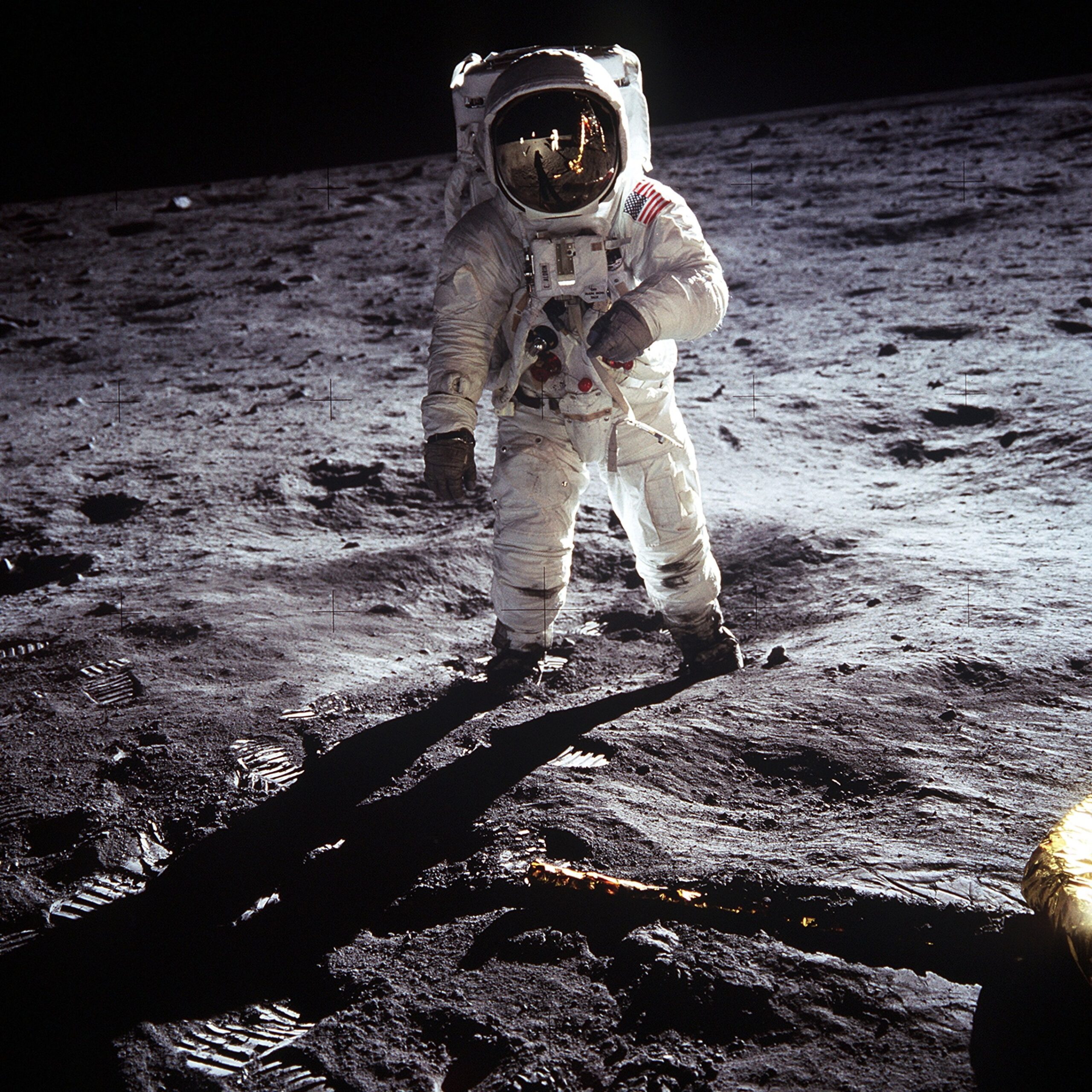
Buzz Aldrin on the Moon in 1969.
Credit: NASA
AGU News
Register now to attend the 2023 Annual Meeting
Staff, freelance and student journalists, along with press officers and institutional writers covering the conference, are eligible for free registration for AGU’s annual meeting (#AGU23), coming to San Francisco, CA (and online) 11-15 December. [AGU23 Press Center][Press registration and housing][Media advisories]
Indigenous science focus
- “Pyro-diverse” traditional knowledges apply fire to manage East and Southern African savannas [Earth’s Future]
- Tiwi Islanders monitor climate change in Northern Australia [Earth’s Future]
- Myanmar community contains coal mining waste fires [GeoHealth]
- Palestinian charcoal producers and Israeli researchers collaborate to make a traditional practice burn cleaner [Earth and Space Science]
- Ikaaġvik Sikukun (Ice Bridges) project “ice-tethered observatory” tracks heat budget of dwindling landfast ice in Kotzebue Sound [JGR Oceans]
- Indigenous communities adapt as climate change upends ecological calendars globally [collection overview]
- Balancing open science, data privacy and fairness [Water Science Research]
- Co-Creating ethical practices and approaches for fieldwork [AGU Advances]
Featured research
Mars is safer for human brains than the Moon or deep space
A major concern for astronauts in space is exposure to radiation from galactic cosmic rays and solar energetic particles, which could potentially harm the central nervous system. A new study finds that astronauts will be exposed to more radiation on the Moon’s surface and in deep space than they will be on Mars, creating a need for adequate shielding protection. [Space Weather research]
Air pollution competes with greenhouse gases to rein in rain over South Asia
Greenhouse gases should have increased rainfall over South Asia, but high aerosol concentrations have offset excess rainfall in the region since the mid-20th century. Nevertheless, greenhouse gas-induced rainfall will likely increase in South Asia as aerosol emissions stabilize in the mid-21st century. [Geophysical Research Letters research]
Storms bring water vapor to higher altitudes than previously thought
Thunderstorms are known to bring water vapor to the stratosphere, but a recent study flew planes at extreme altitudes in the stratosphere and found water vapor present at elevations higher than all prior global records — around 18 kilometers (11 miles) high. Water vapor in the stratosphere can contribute to global warming and harm ozone, and the processes that push water vapor up may increase in frequency as the climate warms. [Geophysical Research Letters research]
Cities make some thunderstorms in Southeast US stronger and wetter
Weather conditions that have the necessary elements for convection but lack strong lift can spawn “weakly-forced” thunderstorms susceptible to added environmental influences. New research finds that the unstable atmospheric conditions near urban areas facilitate updrafts, causing these storms to be stronger, more hail-prone, and produce more lightning than similar storms forming outside the city. [Geophysical Research Letters research]
James Webb Space Telescope captures Saturn’s changing seasons
Winter is coming—and not just for Earth’s Northern Hemisphere. Northern summer on Saturn is coming to a close after about 7.5 years, with its fall equinox coming up in 2025. Unprecedented images reveal how Saturn’s atmosphere is evolving as summertime winds down in its northern hemisphere. [JGR Planets research] [Eos Research Spotlight]
AGU (www.agu.org) is a global community supporting more than half a million advocates and professionals in Earth and space sciences. Through broad and inclusive partnerships, AGU aims to advance discovery and solution science that accelerate knowledge and create solutions that are ethical, unbiased and respectful of communities and their values. Our programs include serving as a scholarly publisher, convening virtual and in-person events and providing career support. We live our values in everything we do, such as our net zero energy renovated building in Washington, D.C. and our Ethics and Equity Center, which fosters a diverse and inclusive geoscience community to ensure responsible conduct.